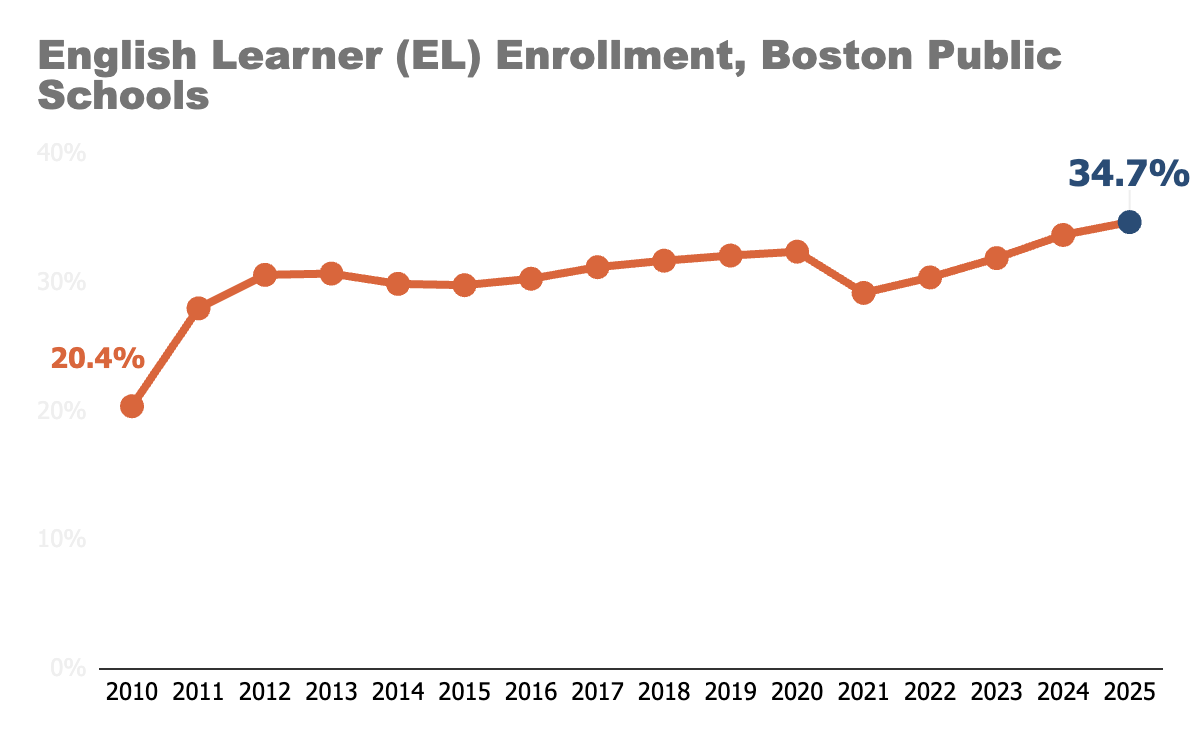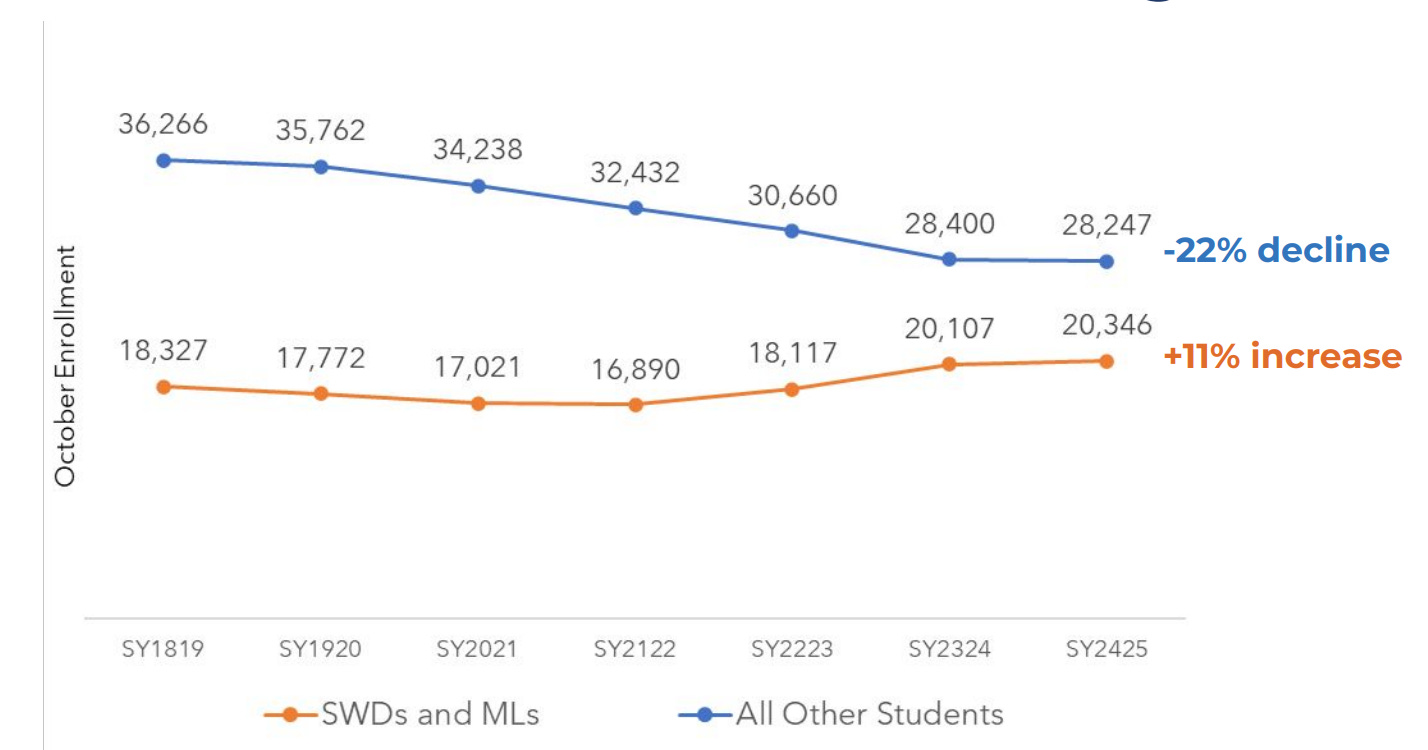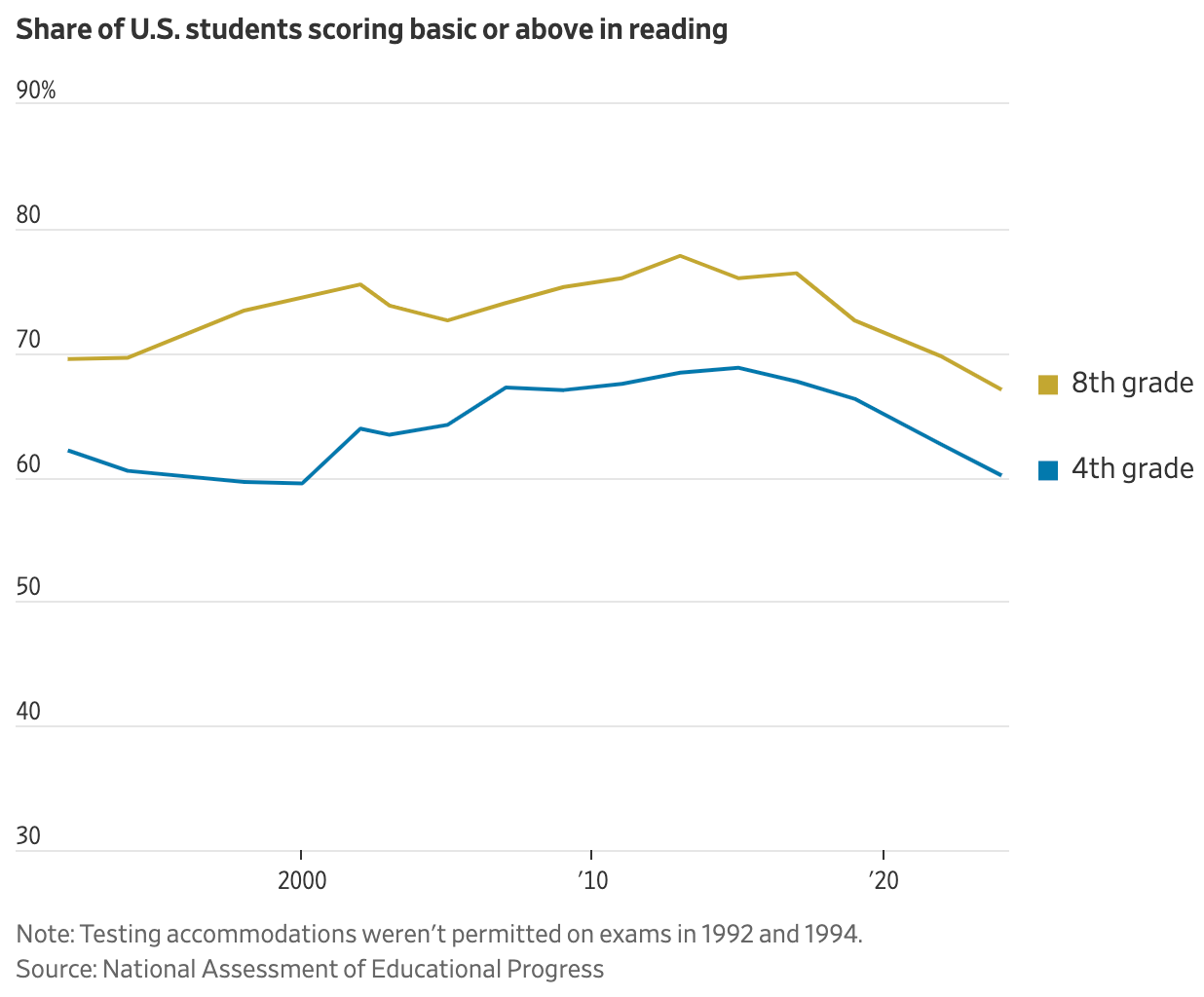Recently released Boston enrollment data points to one more long-term trend worth noting.
There are not only fewer children in Boston Public Schools (BPS) and more children enrolled in Boston’s charter schools; the actual demography of BPS students has also shifted substantially.
The racial composition of BPS has changed since data was first publicly reported in 1994. In the span of a generation, BPS has gone from a nearly majority Black school district to a nearly majority Latino school district.
As I have written before, there are multiple factors contributing to the decline in Black student enrollment in BPS, including how race is reported.
Nonetheless, the shift is dramatic. There are ~16,600 fewer Black students enrolled in BPS than there were in 1994. That is equal to the student enrollment of Lynn.
During this same time period, Boston’s foreign-born population grew. More and more students were starting school in Boston with limited or no English skills, and often little or interrupted schooling. These students - classified now as English Learners (ELs) by the state and as Multilingual Learners (MLs) in Boston - now comprise greater than ⅓ of the district’s enrollment.
While Boston became one of the wealthiest and most expensive cities in the world that trend did not extend to its schools. Over the past decade, the rate of low-income children enrolled in Boston schools has substantially increased.
This outstrips even the overall enrollment decrease in the district. Since 2015, actual EL enrollment slightly declined, while low-income enrollment increased by 20%.
Layering on students with disabilities, Boston school enrollment features an increasing concentration of students with high needs. From Boston School Committee in December:
The upshot is that the average Boston student requires more resources. That creates budget pressure in even normal times, let alone during the 24 hours of chaos when the Trump Administration attempted to “freeze” all federal funds this week.
Federal funds go to education everywhere in the country, but that threat of funding loss was not equally felt. School districts like Boston, with a high concentration of student needs, rely on Title I, IDEA, Title III, and a variety of other federal funding streams to not just educate children, but even feed them.
Something to keep in mind, as Boston School Committee begins budgeting next week.
NAEP
2024 data from the National Assessment of Educational Progress (NAEP), the “Nation’s Report Card,” was released this week.
It was the best of times. Massachusetts was thrilled to maintain its top spot across all four reading and math exams in 4th and 8th grade. Several states, including Louisiana, have posted tremendous progress. Boston’s students performed similarly to students in other major cities.
It was the worst of times. National reading levels have never been lower.
Low-achieving students are losing even more ground. Massachusetts students are still lagging behind pandemic levels. Boston’s 8th graders’ proficiency in reading and math declined to 20-year lows.
The overall empirically low performance had many people looking backwards, not forwards. Is there a connection between how the $190B in federal stimulus got spent and how students are doing?
Five years ago, I think we all would have hoped graphs like this would look differently.
NAEP elicited reactions that reflect how much education politics have realigned. Some were quick to point out faster academic recovery in many “red states,” validation for centralized models and interventions liberals and progressives once championed.
Others (like Jack Schneider here) cautioned to mind the role of socioeconomic status in testing, a cousin of conservative arguments about the role of non-school factors in school performance.
We heard loud voices on either side of the same set of facts.
But we heard little about what to do about it.
Schools
What has happened recently when Boston Public School buildings are closed? They often reopen, as schools.
White Stadium demolition is slated to start next week, with a split City Council and ongoing protests.
The Rennie Center released its annual condition of education report and accompanying dashboard.
Citing youth mental health, parents and advocates are joining Attorney General Campbell in a call to ban cell phone use in schools, bell-to-bell. This topic, and an initial “toolkit,” was also discussed at this month’s Board of Elementary and Secondary Education. Full materials here, including the continued question of Massachusetts high school graduation standards.
School leaders and state leaders are attempting to provide guidance and assurance given the dramatic shifts in immigration policy.
Why are fewer men becoming teachers?
Labor has graduated from PK-12: some Tufts students missed classes this week with lecturers on strike.
Some colleges and universities, like Northeastern, didn’t wait for Trump’s latest round of executive orders to change policies. Massachusetts Higher Education Commissioner Noe Ortega attempts to reframe this debate in this long interview with Commonwealth.













